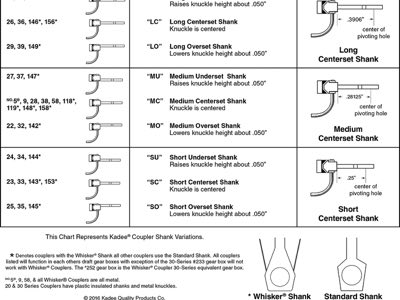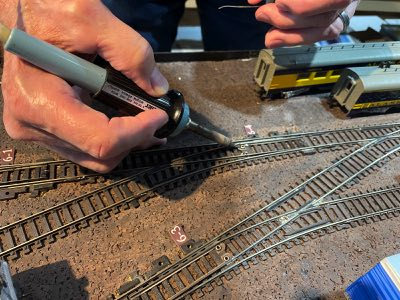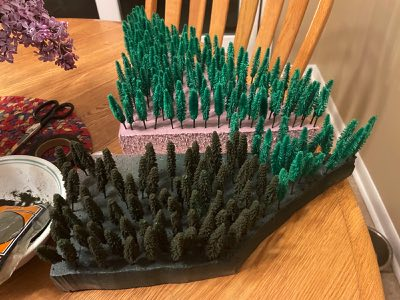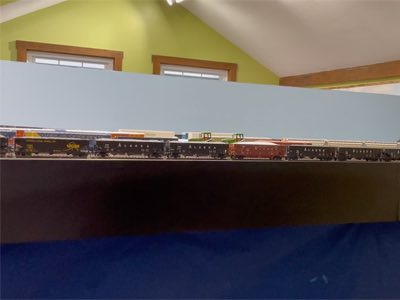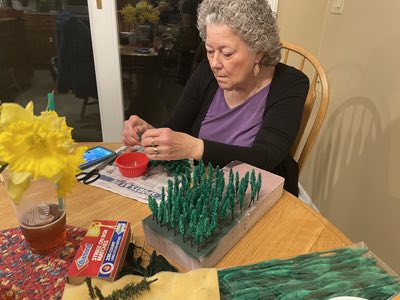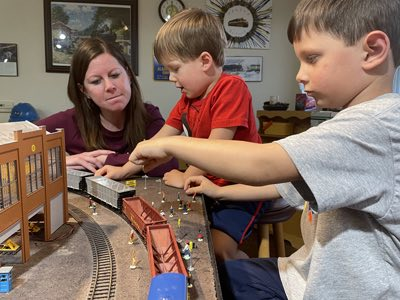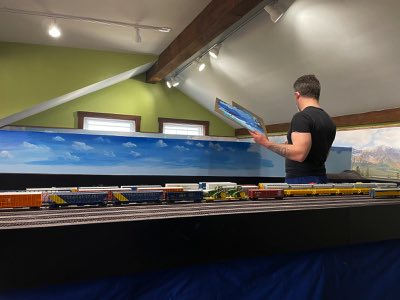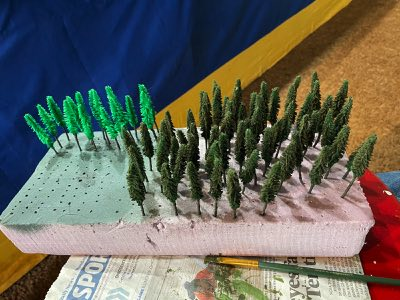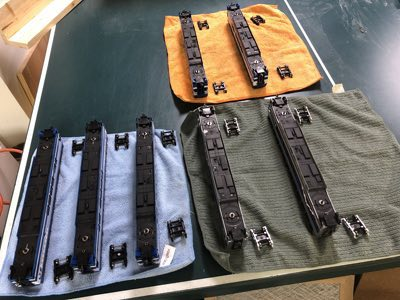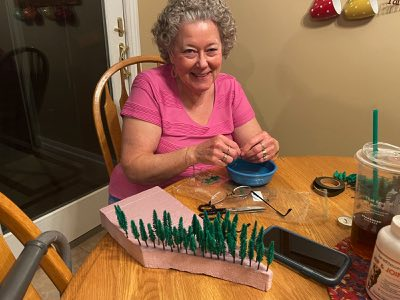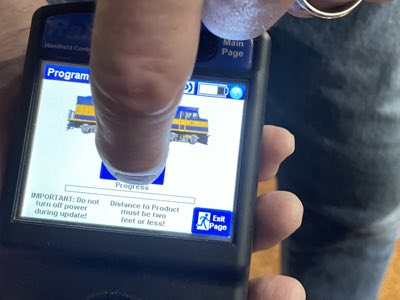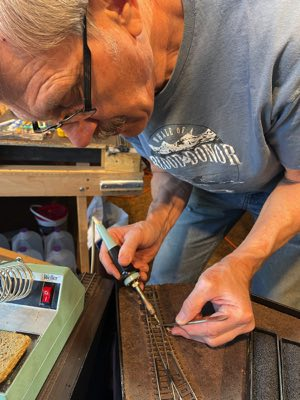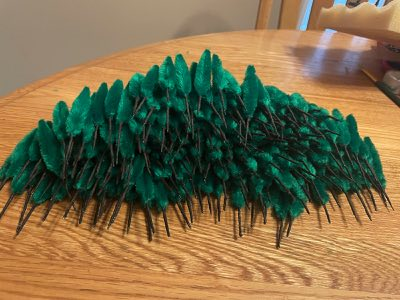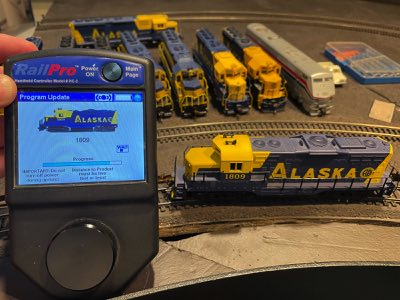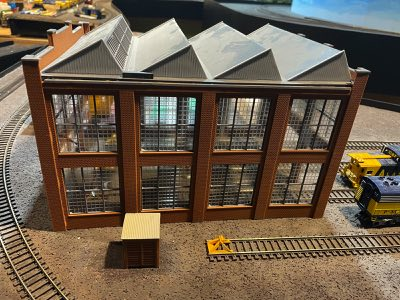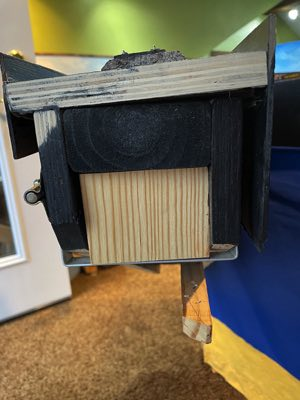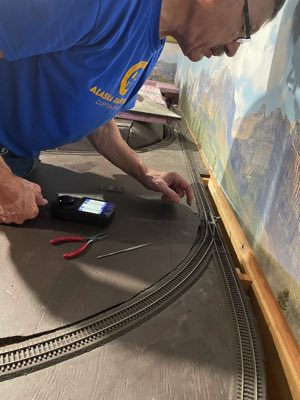| F7 #1510 pushes the LED track testing car in addition to pulling a striking consist of cruise ship passenger cars and the converted four axle baggage car. All passenger cars traverse the entire layout without issue except..... at the "Smooth as Glass" curve. This area results in pull-aparts in several of the Ultradome passenger cars. |
Rick is an extremely patient and thorough guy as exhibited by once again pulling up all the track and cork bed in the "Smooth as Glass" curve. He uses a belt sander to smooth out the ripples in the plywood as well as ensure a constant elevation increase. After replacing the track he runs the passenger consist through the area and finds the passenger cars lean and rock back and forth. He takes them home to do some modifications. |
Jackie continues to work with the bumpy Chenille trimming the shapes and wetting the flat spots. By the end of the evening she has almost 100 trees ready for painting and floral tape bark! |
All of our children and grandchildren arrive for the weekend to celebrate Easter and hunt 400 candy and money filled eggs. Grandson Liam continually cajoles me to run the train. On Saturday evening I finally "ahem" cave in and comply. Liam surprises me by finding the controller, turning it on, quickly selecting the locomotive I put on the track, ringing the bell, blowing the horn and firing up the engine. This young man is made for the model railroading business!
Master modeler Patrick Durand once told me these young kids are the future life blood of the hobby. We need to give them hands on experience by letting them play on the layout. If they break something then quietly fix it. On Easter eve my daughter Anne watches as her sons immerse themselves in the hobby by playing with miniature people, signs and other accessories as a consist of hoppers pass them by. She actually recalls playing with these same items several decades ago on my previous layout! |
At his home Rick continues to tinker with the passenger cars. Each passenger car's height is checked and necessary adjustments are made to the two McKinley Explorer cars. Height adjustment washers are fixed in place with epoxy. This should prevent leaning. The trucks will be put back on the following day and each car will be checked for leaning.
A bad long shank coupler was discovered on the Nenana and Rick stopped by the house for a replacement. Hopefully, these efforts plus the belt sanding work will result in a smooth passenger car run. As some of you already know, manufacturers sometime produce cars that don't actually run well right out of the box. Thankfully, Rick's skills can correct deficiencies and provide smooth operations at Clayton's Alaska Railroad. |
|
